Creative Project Management Essentials: Characteristics, Stages, and Reasons to Implement PM Software

Audio version:
Managing projects in the creative field can be simultaneously inspiring and challenging. However, by assembling a talented team and utilizing appropriate tools, organizations can guarantee the evolution of creative project management into extraordinary outcomes and benefits.
The sphere of project management continues to evolve. According to the research, the global economy will need 25 million new project professionals by 2030. Some of them will certainly be related to creativity.
What are the core characteristics of creative project management?
Besides a typical organizational structure, proficiency in relationship management, and adaptability, the realm of creative PM demands a distinctly inventive approach.
This is probably not very clear yet. But if you continue reading this article, you’ll find explanations and insights regarding the role and importance of project management for creative teams in modern business.
Let’s dive into the details right away.
Contents:
- What is creative project management?
- Key characteristics of creative project management.
- Why is creative project management important?
- Creative project management vs. traditional project management.
- 5 stages of creative project lifecycle.
- The benefits of using project management software for creative project management.
What is creative project management?
Creative project management is the structured process of planning, organizing, and overseeing tasks and resources to effectively execute creative work.
It can be design, advertising, a marketing campaign, or artistic endeavor that foster innovation and maintain quality and deadlines. However, creative components can be found in any traditional project.
Here’s how the role and impact of the creativity component is evaluated by Damian Scalerandi, the SVP at BairesDev, the IT consulting company:
Creativity is not something restricted to novelists, musicians, and artists. It is an essential asset for any team in any industry, no matter the job description. By applying creative strategies, you will see a boost in your team’s creative output and be ready to adopt innovative solutions.
Overall, creative team project management combines fundamental PM techniques with creativity and innovation to reach project success in a creative and efficient manner.
What other distinctive features can be noted when talking about the organization of creative processes?
Key characteristics of creative project management
Project management for creative teams involves overseeing and guiding projects that require innovative thinking, creative problem-solving, and sometimes artistic expression.
This sphere has specific characteristics that set it apart.

- Emphasis on creativity. Creative project management places a high value on fostering and harnessing creativity throughout a project lifecycle. It encourages individuals to think outside the box and explore new ideas and approaches.
- Cross-disciplinary communication. Creative projects often involve people with diverse skills and backgrounds, such as designers, artists, writers, and technologists. They need to communicate effectively, and creative PM encourages this.
- Flexible processes. Unlike rigid PM methodologies, creative project management often comes with flexible processes that can adapt to the unpredictable nature of creative work. It allows for frequent adjustments.
- Fluid planning. Plans in creative project management are typically more adaptable and fluid. Therefore, project managers must be ready to adjust a project timeline, budgets, and scope accordingly.
- Risk-taking. Creative projects often involve experimentation and risks. It means that PMs must be willing to take these risks to push boundaries and achieve innovative results.
- Regular feedback. Team members in creative projects are usually encouraged to provide regular feedback on ideas, designs, and prototypes to refine and improve their projects.
- Quality сontrol. Maintaining quality is also crucial in creative projects. Managers must establish standards and processes for quality control while allowing for creative expression.
- Outcome-centric. While creative projects focus on creative processes, they also prioritize delivering tangible outcomes. Managers must ensure that their projects meet objectives, whether they are artistic, commercial, or both.
- Inspiration and passion. Creative project managers often need to inspire and motivate their teams, as creative work can be demanding and emotionally charged. Passion for work and a deep understanding of creative processes are important qualities.
To understand why businesses rely on creative project management, you need to explore the main benefits that this area provides.
Why is creative project management important?
Creative project management enables teams to direct their creativity effectively while delivering value to stakeholders and clients.
It is important for several reasons, which are highlighted below.
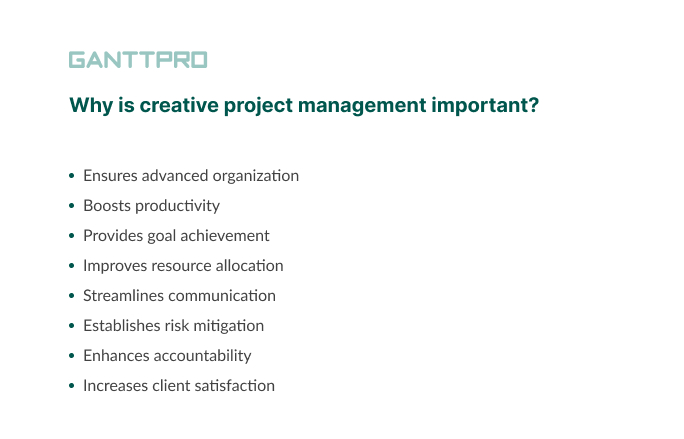
- Ensures advanced organization. Creative projects often involve multiple team members, complex tasks, and tight deadlines. With effective management, teams get the necessary structure and organization. It ensures that everyone is on the same page, tasks are tracked, and projects are on schedule.
- Boosts productivity. Professional PM tools and methodologies help streamline creative processes, eliminate bottlenecks, and reduce unnecessary work. This increases efficiency and productivity, allowing team members to produce high-quality work more quickly.
- Provides goal achievement. Creative projects usually have specific objectives and goals, whether it’s generating an advertising campaign, designing a product, or producing equipment for an exhibition stand. Professional management helps define these goals, break them down into actionable steps, and monitor progress toward their achievement.
- Improves resource allocation. Creative projects require different resources, including people, time, and budget. Project managers help allocate resources efficiently, ensuring that the right people with the right skills are assigned to the appropriate tasks and that their projects stay within budget.
- Streamlines collaboration. Well-planned project management fosters collaboration among team members. It ensures that everyone understands their roles and responsibilities and prevents misunderstandings and conflicts that can hinder creative work. This is what makes an ordinary group of employees with similar skills a high performing team.
- Establishes risk mitigation. Every project involves risks, such as changes in client requirements, resource constraints, or unexpected project delays. PM specialists identify potential risks and develop strategies to mitigate them, reducing the chances of project failure.
- Enhances accountability. Project management holds teams accountable for their tasks and deadlines. When individuals know they are responsible for specific activities and that progress is being monitored, they are more likely to stay motivated and perform at their best.
- Increases client satisfaction. This point is crucial for many companies, agencies, and freelancers. Effective project management ensures client expectations are managed, and deliverables are met on time. Happy clients are more likely to return for future projects and refer others.
Now another important issue requires discussion. Is managing creative work a completely different field from managing projects in technical or other fields?
Below are some thoughts on this matter.
Creative project management vs. traditional project management
Creative project management and traditional project management both encompass numerous shared principles and processes, yet they exhibit notable disparities.
Let’s determine the fundamental distinctions between them.

Project nature:
- Creative projects usually involve tasks like design, advertising, marketing, content creation,or film production where innovation and unique solutions are crucial.
- Traditional PM is often applied to projects with well-defined objectives, clear specifications, and established processes. You can easily find such examples in IT, manufacturing, infrastructure, or construction project management.
Scope definition:
- In creative projects, the initial scope can be defined not very clearly, and the project’s direction can evolve as new ideas emerge. The scope may be more fluid. Therefore, it’s important to manage scope changes effectively.
- Traditional projects usually start their way with a well-defined scope, detailed specifications, and a clear understanding of deliverables. This makes scope management more straightforward.
Flexibility:
- Creative projects often require a high degree of flexibility and adaptability because innovative and unusual ideas can evolve and change rapidly. It means that managers in creative fields must be open to revisions and creative input from their team members.
- Traditional processes tend to have more rigid structures and fixed plans. Changes are typically managed through formal control processes to minimize disruption.
Team dynamics:
- Creative work involves interdisciplinary teams that collaborate closely. Managing such teams requires an understanding of creative processes, individual creativity, and fostering an environment that encourages innovation.
- Teams involved in traditional projects may follow a hierarchical structure with clearly defined roles and responsibilities. The focus is often on efficient execution and adherence to established processes.
Level of uncertainty:
- Creative projects may be characterized by more inherent uncertainty because of the experimental nature of creative endeavors. Therefore, project managers must be ready for a higher level of ambiguity.
- Traditional projects tend to have a lower tolerance for uncertainty. They involve risk mitigation strategies and adherence to established standards.
Documentation:
- While documentation is still important, creative projects may prioritize visual assets, prototypes, and creative briefs over extensive docs.
- Traditional projects often rely on comprehensive documentation, including detailed project plans, specifications, and technical documents.
Outcome evaluation:
- Evaluation of creative projects can be subjective. Success may be measured in terms of audience engagement, impact, or emotional response.
- Success evaluation in traditional PM often involves objective criteria such as cost, quality, and adherence to specifications.
We’ve figured out the main differences and characteristics of a creative project management process. What about the lifecycle of such projects? What makes them special?
5 stages of creative project management lifecycle
Creative projects are unique and the approach to their management is often subjective. However, as well as in traditional project management, such projects provide roadmaps that define the scope of work and its complexity.
Creative project managers break their projects down into five phases:
Creative PM also organizes work processes in detail, but it adds one more essential factor – generating the organic way creative ideas come to life.
Let’s briefly recall the key stages of a project lifecycle, keeping in mind the component of creative work and leaving room for creativity.
1. Initiation
Initiation is the first phase in the journey of any project that typically starts before creating a project plan. During this crucial stage, a team and a client engage in comprehensive discussions regarding project deliverables and the scope. These processes need coordination by a creative project manager.
The scope should describe the client’s objectives and entail deliverables, as well as project management milestones and the required budget. The goals and the client’s specific requirements form the basement upon which the project is built, making this phase pivotal.
Furthermore, this stage includes a discussion of additional critical elements. For example, collaborative processes, their frequency, project monitoring methodologies, and reporting procedures.
Finding a tool that aligns with both your requirements and adheres to the company’s policy is also crucial at this stage.
Applying a professional tool balances creativity and business objectives. Different teams possess distinct requisites when it comes to project management platforms, making it imperative to seek out a solution that offers flexibility.
Some teams rely on traditional PM tools while others prefer using creative agency project management software specifically designed for creative work needs.
2. Planning
The second stage of any project lifecycle is planning. It involves defining each task included in the project in detail and its proper allocation to relevant team members.
Creative teams should discuss their projects frequently and share goals that could make work innovative and time-saving.
Planning also involves creating a project timeline and visualization of all tasks and activities on it. It entails capacity planning, which means checking the availability of team members and resources needed for the project’s completion. Managers decide the deadlines for the completion of each task and set task dependencies at this stage.
3. Execution
This phase involves the transformation of all tasks discussed during the planning stage into tangible actions. Project managers diligently oversee and document the project’s advancement with the help of reliable marketing project management tools.
The best creative project management software simplifies the work of project managers by enabling them to effortlessly monitor progress and estimate task completion time with a simple click. Effective monitoring and vigilant project tracking serve as deterrents to any unwarranted expansion of a project scope creep.
Project managers are also responsible for managing any obstacles arising during their projects. Regular and clear communication of project’s objectives to team members is essential to prevent any potential confusion.
4. Monitoring
It is imperative to maintain continuous oversight, as any deviation could lead to project failure.
Project managers should care about the multitude of their responsibilities. They set clear KPIs, assess potential project risks, and diligently control scope creep.
Moreover, this phase offers an opportunity for stakeholder engagement, as they may opt to make adjustments to specific features. Consequently, it becomes necessary to adjust the plan to align with their evolving expectations.
5. Closing
This phase marks the end journey of a project cycle. Clients get the documentation and reports about their projects as well as project deliverables. All team members have an opportunity to measure the project results.
It is a good final if the project output exceeds the client’s expectations or at least meets them. In the end, all creative project participants should be satisfied with their work to be considered a success.
Another important point worth highlighting in this guide is the role and importance of professional software for managing creative work.
The benefits of using project management software for creative project management
Modern project management software for creative project management offers numerous advantages that can help streamline creative processes, improve collaboration, and enhance overall project outcomes.
When selecting the best online solution for your team, it’s important to consider the set of features and capabilities of this tool, its ease of use, pricing policy, as well as particular benefits it can bring to your business.
Below are some of the key benefits such tools propose.

1. All creative ideas in action within a well-structured plan
Everyone who strives to manage creative work knows that it is critical to have a solid structure to avoid confusion, mistakes, and unnecessary delays.
Such platforms as GanttPRO Gantt chart creator look extremely helpful here because they let creative teams put every detail into one centralized location.
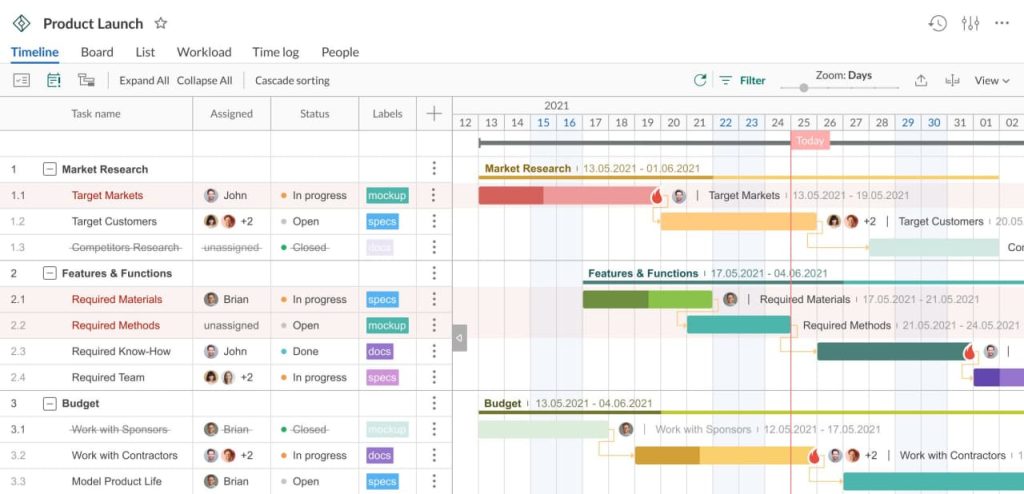
With the help of a handy Gantt chart, project managers can easily organize every tiny detail for all relevant stakeholders to see. Teams can gather all ideas from brainstorming sessions in one place which makes it easier to manage and curate these ideas. Such a simple and convenient display of visual data is essential for any tool designed for marketing project management.
It all means that instead of asking numerous questions, your team members can refer to the smart software.
Here’s what Anika Albrecht, a project manager and consultant at design for human nature GmbH, the German design studio, thinks about it:
In GanttPRO, I like the way we can link different parts of the project together. We get all the project streams run in parallel. So, we set each project for a customer and then split it into several subprojects and then tasks. This way we have every single task we need to do in one overview, which is great!
Within the diagram, you gather all goals and ideas and place them as tasks on a visually appealing timeline. GanttPRO offers a convenient WBS work breakdown structure creator that assists in breaking complex tasks into more manageable chunks.
It’s possible to organize calendars and schedules by setting priorities, dependencies, and deadlines, as well as marking milestones.
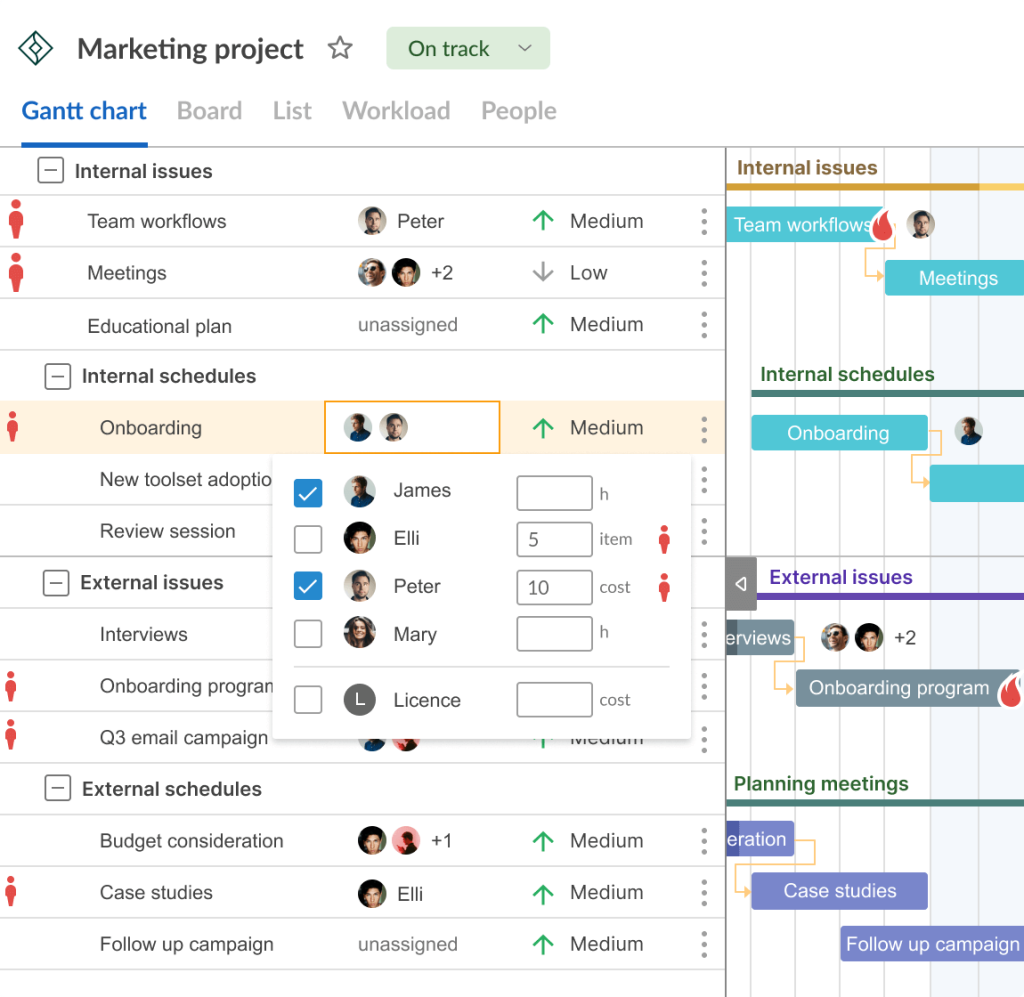
2. Improved resource allocation
Creative work may involve many resources, including people, time, mоney, technologies, and various creative assets.
A well-chosen PM platform provides creative teams with ample opportunities to take resource management to a perfect level.
For example, GanttPRO can also be considered robust resource management software. It allows for allocating resources and gaining complete control over creative staff, schedules, and costs. You can place all resources efficiently, avoiding overbooking or underutilization.
Creative teams choose GanttPRO due to its set of professional features, recognizing it a reliable marketing project management software.
With a handy timeline, you’ll always know who is working on what and when. You’ll be able to add virtual resources and manage them as easily as people.
In GanttPRO, it’s possible to define cost for all resources per hour, per item, or just cost.

3. Well-organized collaboration
Most creative projects typically require collaboration among teammates, customers, and external stakeholders.
A typical PM tool usually offers collaboration features like file sharing, commenting, and real-time updates, facilitating seamless communication.
In GanttPRO, you can share data and keep all your reports, documents, and contacts centralized. Handy notifications, comments, and the capability to attach files make collaboration a breeze.
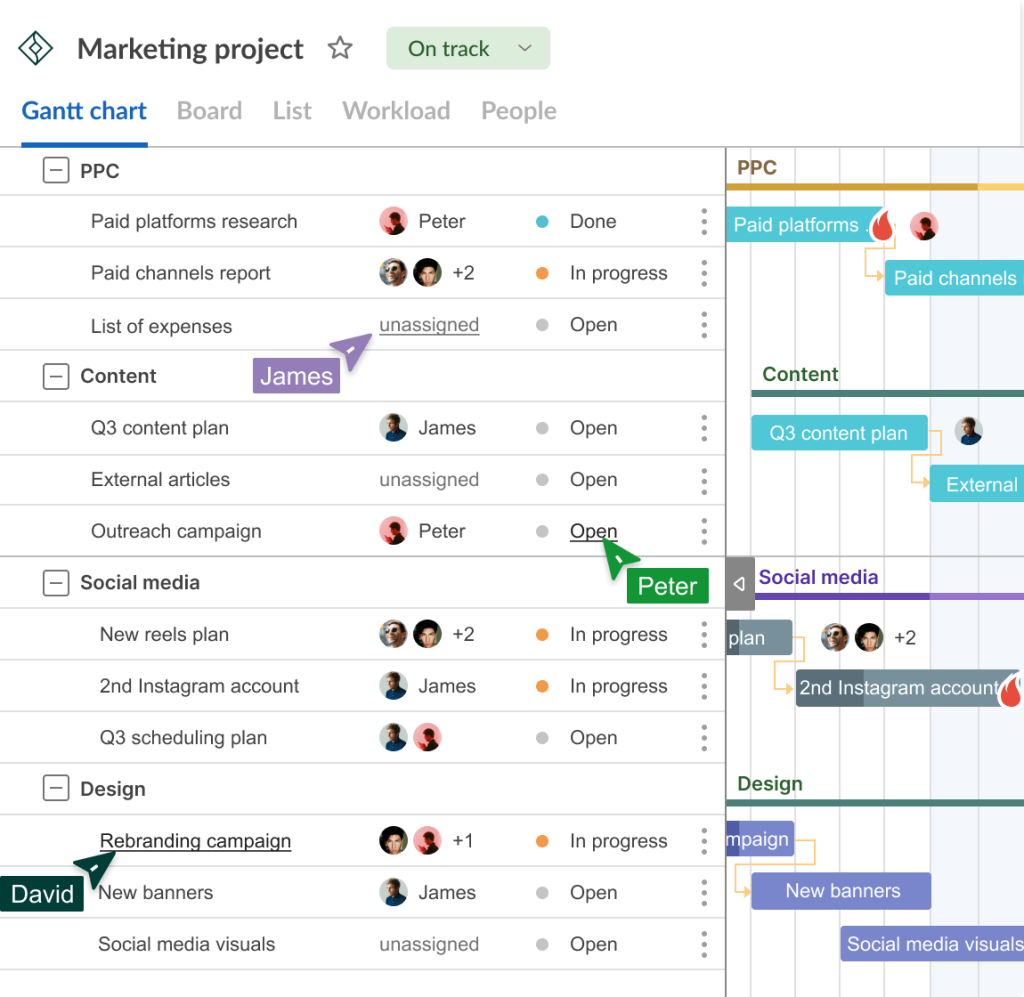
4. Detailed reporting and data analysis
Many project management platforms offer analytics and reporting features, enabling creative businesses to monitor their project performance and pinpoint opportunities for enhancement. This data-driven approach can help them make informed decisions and optimize future projects.
GanttPRO also lets its users save their time and gather data related to their creative project resources. You can work with two types of reports: time log by people and budget analysis.
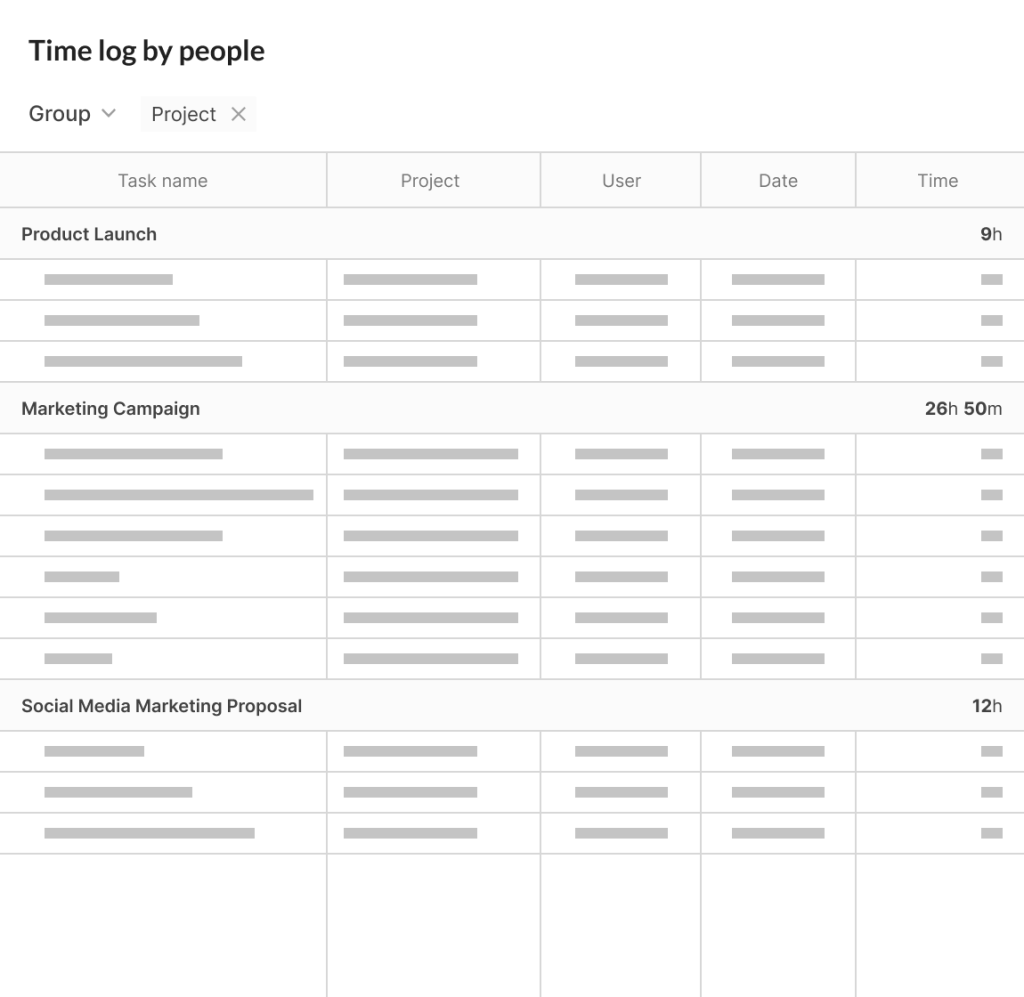
5. Advanced budget management
Many professional software for creative project management processes assist in organizing and controlling financial resources. It reduces the risk of mistakes and improves efficiency.
GanttPRO isn’t an exception. You can set values and costs for all types of resources there. The platform allows for defining costs:
- Per item for material resources.
- Per hour for labor resources.
- Just a fixed cost.
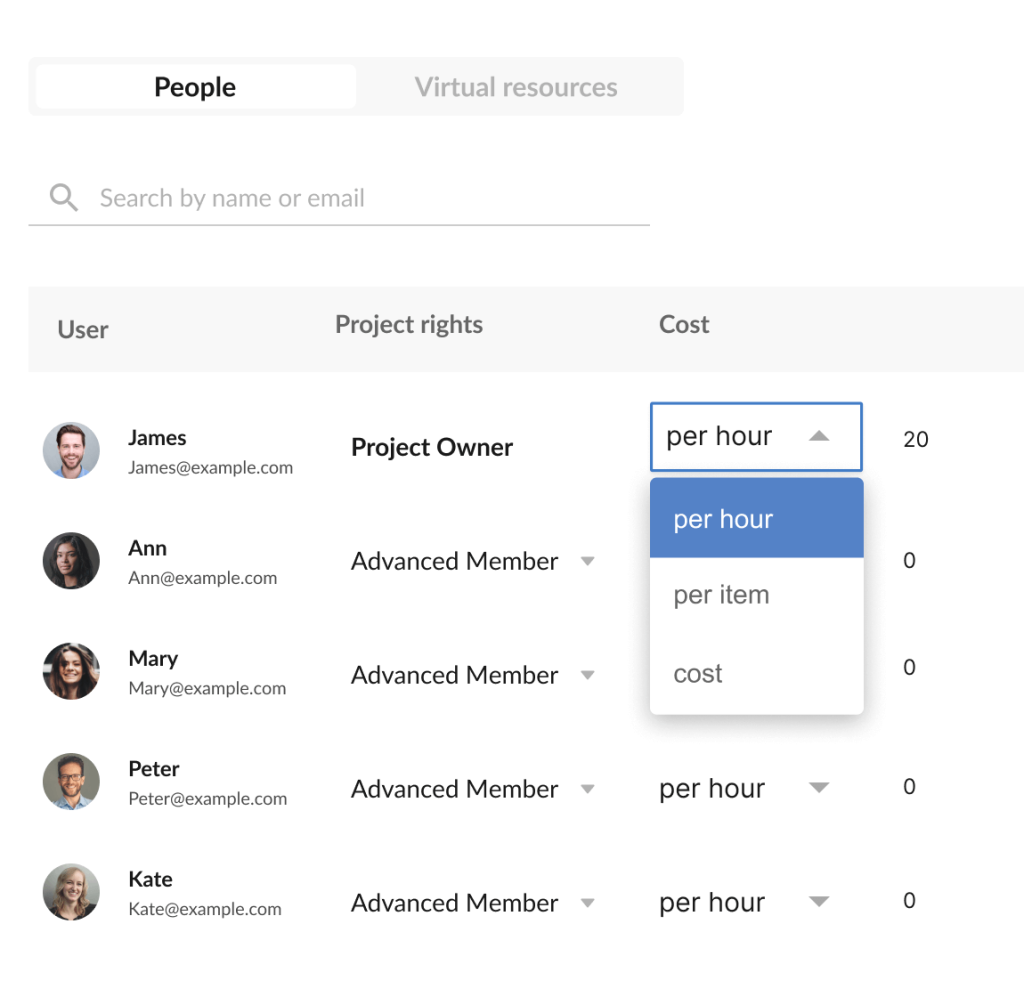
6. Internal and external transparency
Many creative professionals who work with stakeholders and customers need constant transparency in project progress.
All participants of your project can access updates, monitor progress towards goals, track milestones, and provide feedback, thereby nurturing trust and contentment.
GanttPRO users may differentiate access to features and settings with different account roles and project rights. Adding customized roles and rights is also possible.
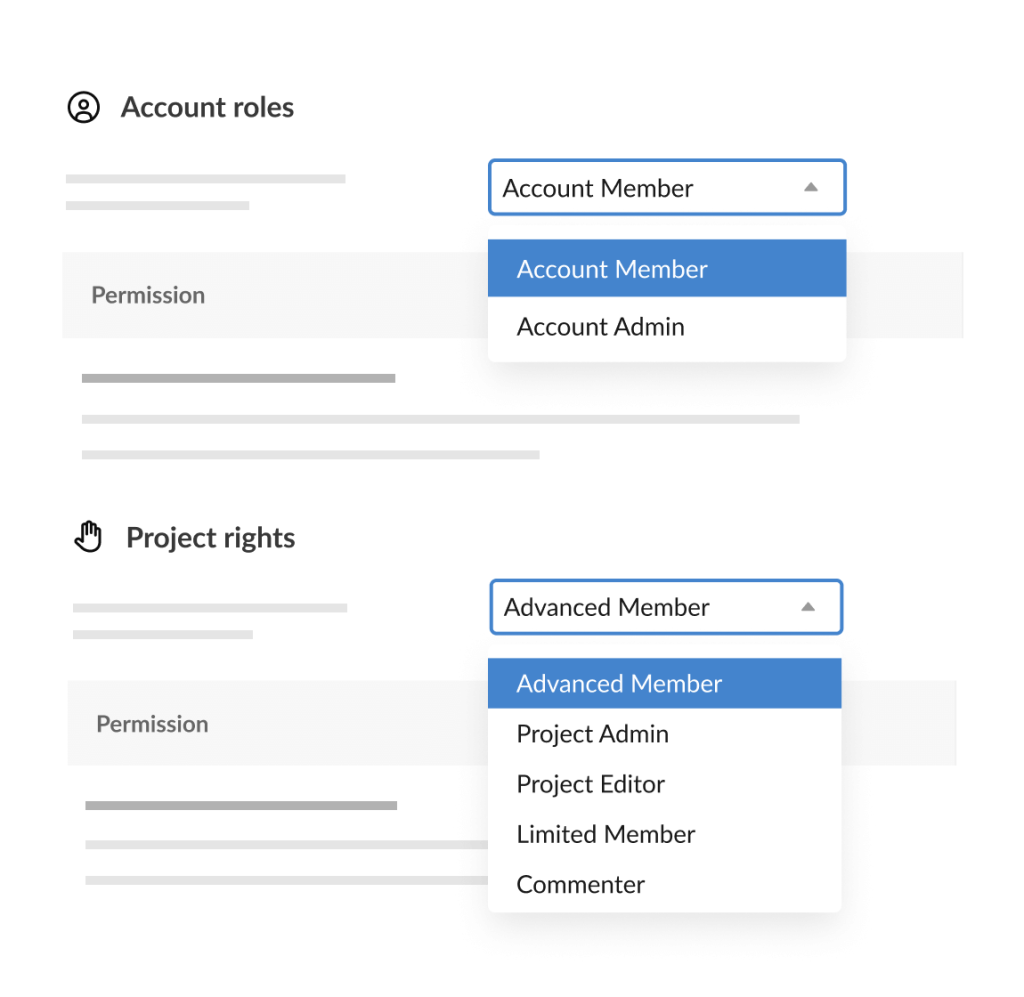
With GanttPRO, creative teams can always have their projects at hand. It’s possible to export charts to PNG, PDF, XML, or Excel formats and share them with a public url.
7. Advanced change management
Change management allows creative teams to incorporate changes to work scopes during their projects.
When changes happen, it’s important that everyone fully understands the project’s scope, and what their desired innovation entails.
GanttPRO helps in adapting and adjusting to changes as soon as possible.
The platform comes with an auto scheduling feature. With its help, creative teams can track all the changes that may happen to dependent tasks in a project. The feature recalculates the dates automatically.
8. Great opportunities for remote work
It won’t be wrong to admit that remote work has become one of the main trends in work management over the past decade.
In the reality of creative team project management, it’s crucial to stay updated with all tasks and projects and keep in touch with a team, no matter where it is located.
With the rise of distributed work, PM software provides a centralized hub for teams to collaborate from different locations.
For example, GanttPRO users can access project information and updates from anywhere with handy GanttPRO mobile apps for Android and iOS.
All of their work can be easily synchronized between the Web and mobile versions in real time.
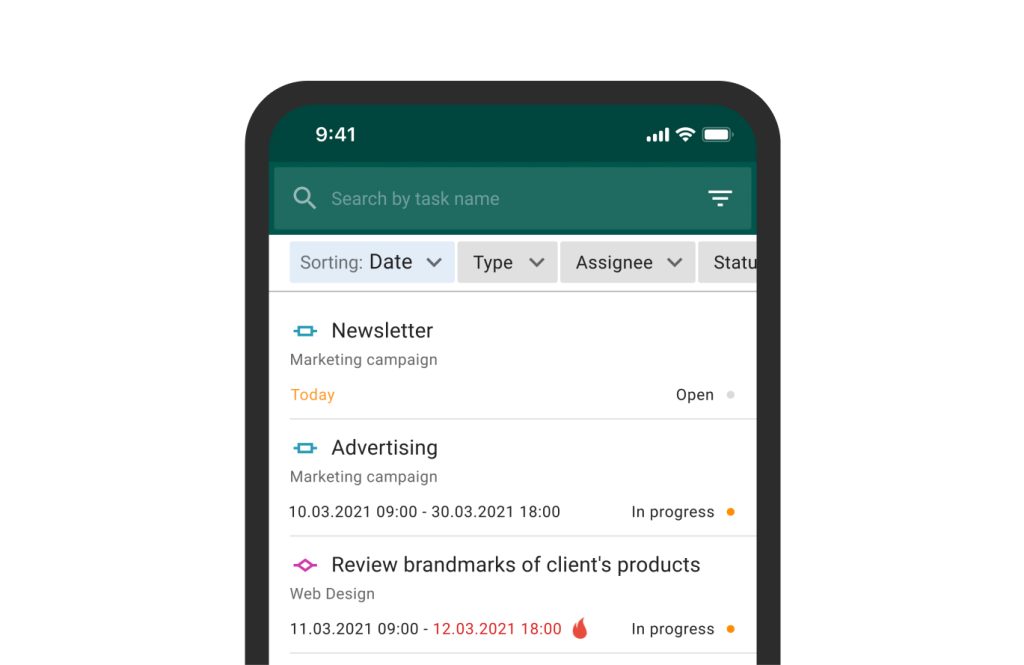
This was a list of common creative PM software benefits. You can complement it, depending on the specifics of your particular project.
Crack the code of creative project management success
Creative project management encompasses the combination of planning, task coordination, knowledge management, embracing risks, and fostering transparent communication. It requires working on various project activities while keeping creativity in mind.
Project managers in this field must be adaptable to evolving requirements while also inspiring their team members. To achieve success, they require professional creative PM software equipped with a diverse array of features and opportunities. Solutions such as GanttPRO assist organizations in not only improving and boosting project performance but also fostering innovation for the future.
You can also give the Gantt chart generator a try to take your creative project management process to a completely higher level.

Professional project management software
Visualize your creative tasks and events on a Gantt chart.
Sign up for free
